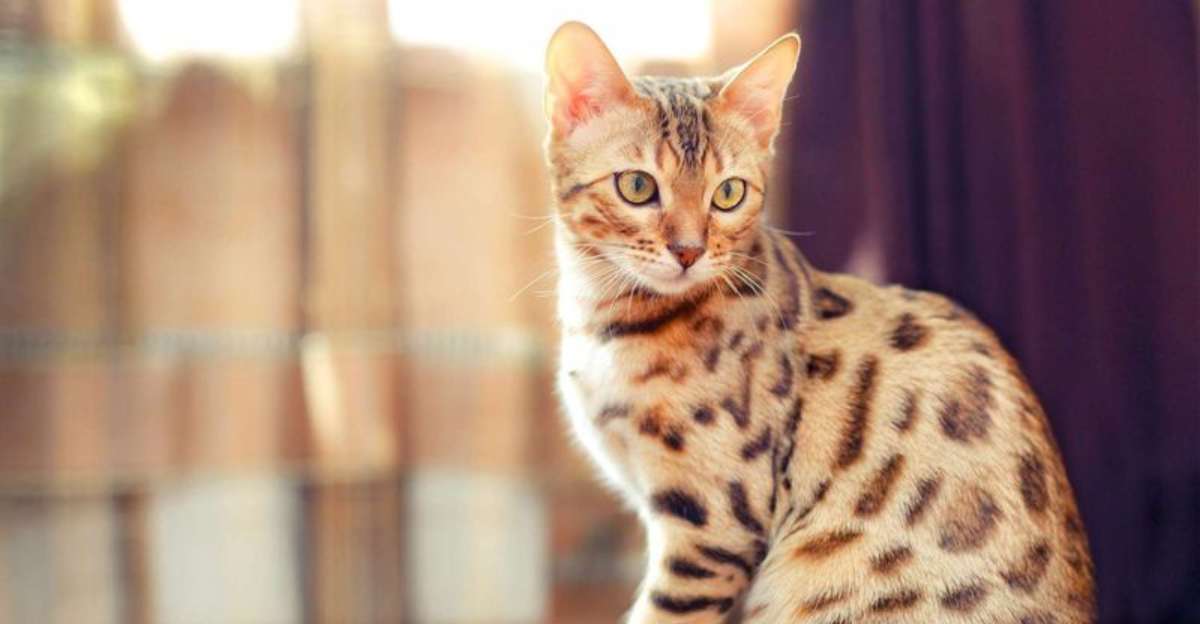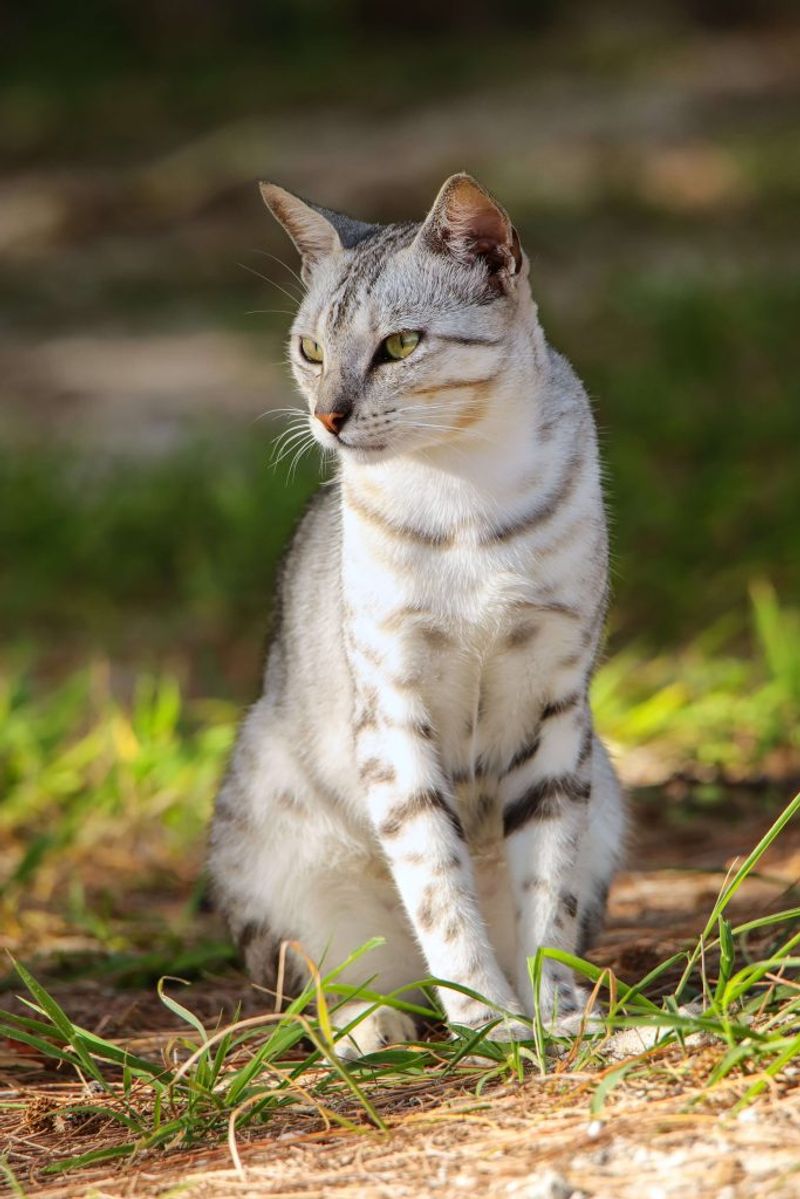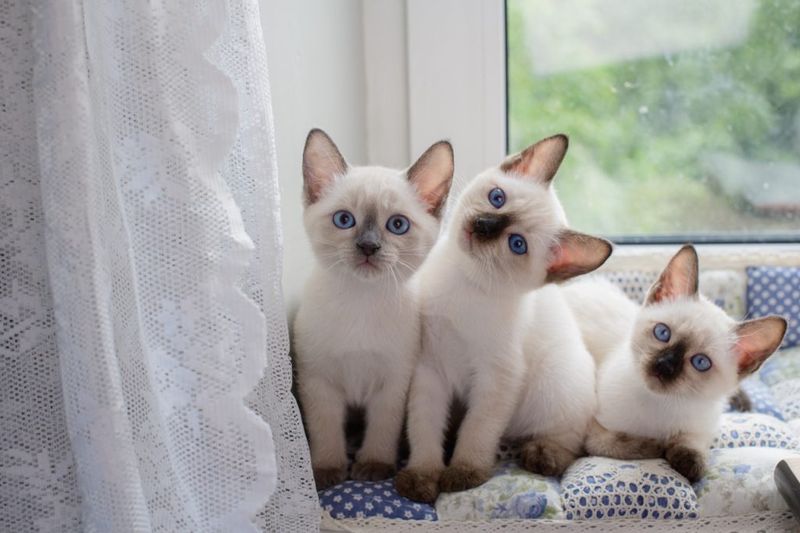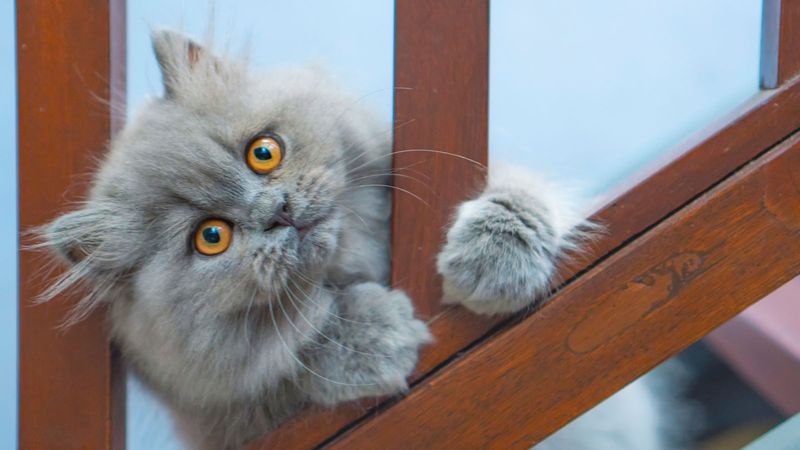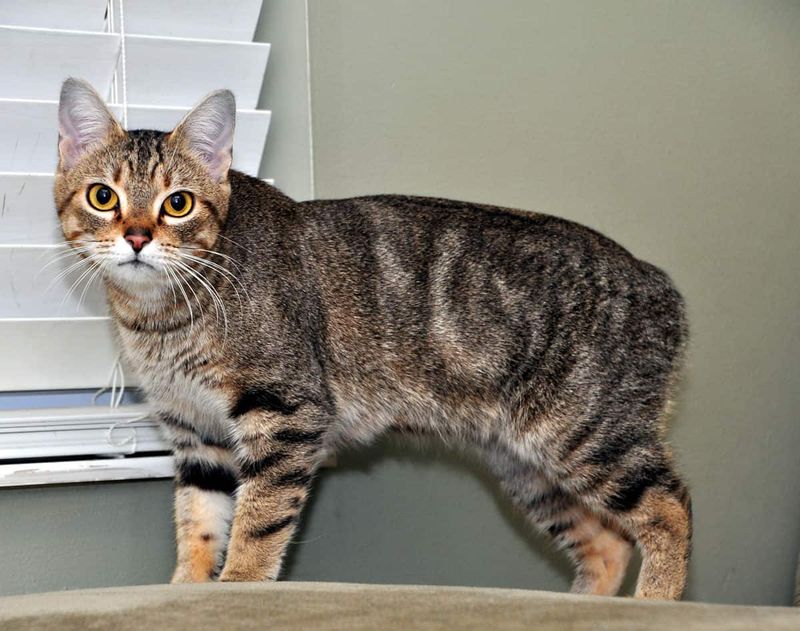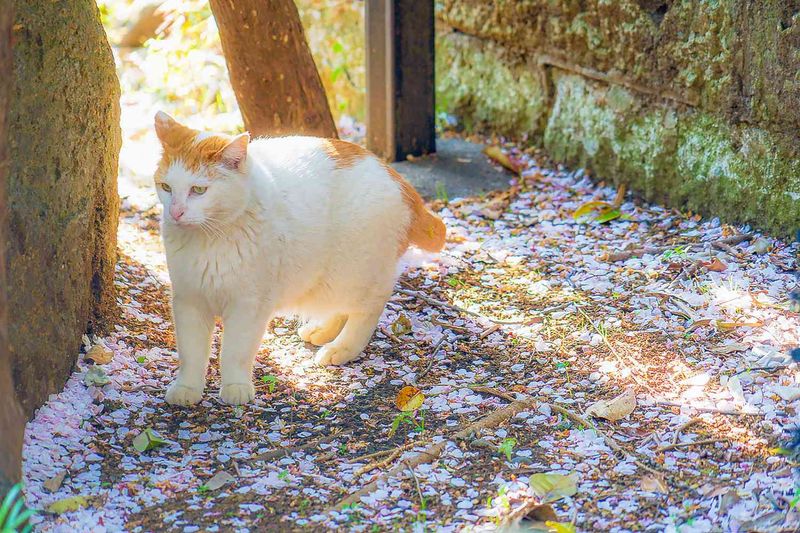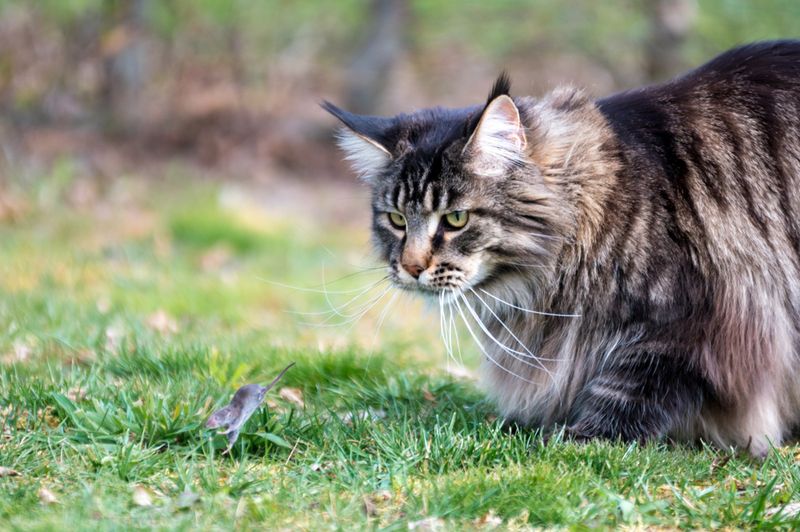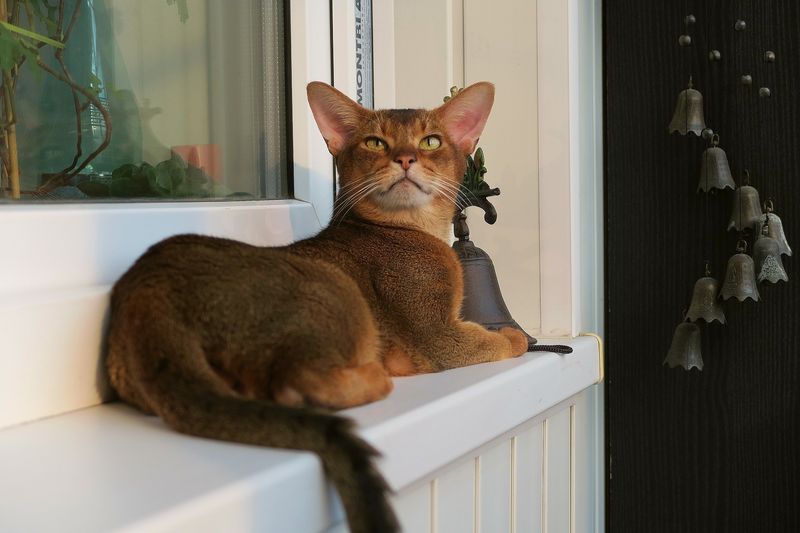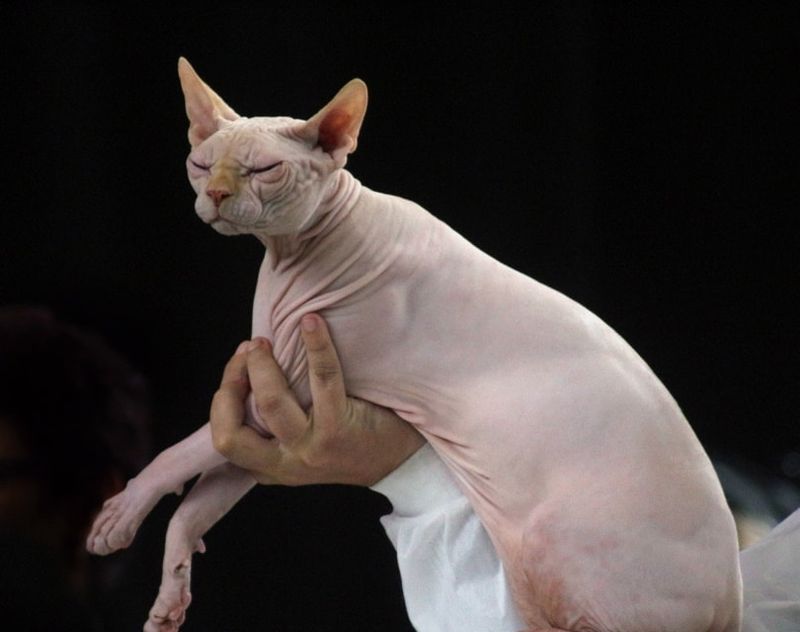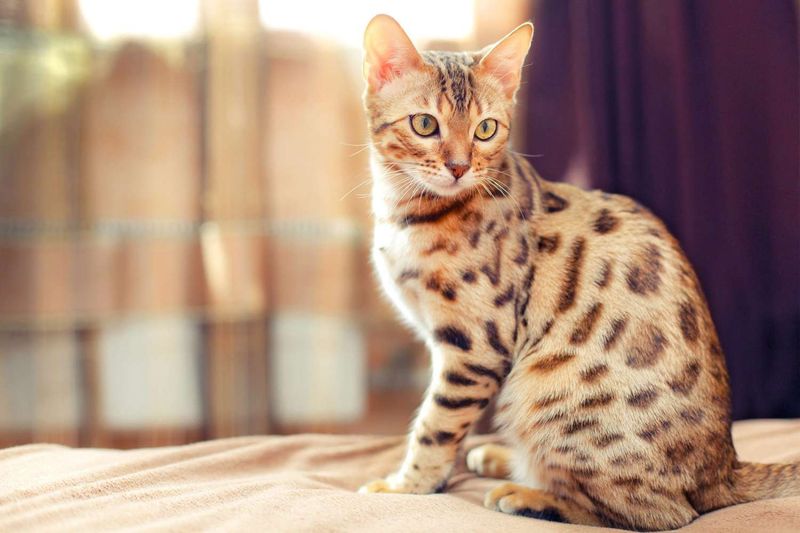📖 Table of Content:
Cats have walked alongside humans for thousands of years, evolving from wild hunters to beloved companions. Throughout this journey, certain cat breeds have played pivotal roles in shaping feline history and our relationship with these fascinating animals. From ancient temple guardians to modern designer breeds, these cats have left paw prints across time and cultures.
1. Egyptian Mau
The spotted coat of the Egyptian Mau isn’t just for show – these cats are living artifacts from ancient times. Archaeological evidence shows these distinctive spotted felines in Egyptian artwork dating back to 1500 BCE.
Maus served as both pest controllers and sacred animals in ancient Egyptian society. They were so revered that killing one – even accidentally – was punishable by death! These athletic cats can run up to 30 mph, making them the fastest domestic cat breed. Their deep connection to Egyptian culture continues today, with many believing they inherit the spirit of their ancient ancestors.
2. Siamese
Royal families in Siam (now Thailand) treasured these blue-eyed beauties for centuries. Legend claims Siamese cats guarded royal treasures and were entrusted with the souls of departed royalty. Their distinctive color points result from a temperature-sensitive enzyme that darkens fur in cooler areas of the body.
When they arrived in the Western world in the late 1800s, people were stunned by their striking appearance and vocal personalities. These intelligent cats quickly became diplomats of the feline world. The King of Siam reportedly gifted pairs to visiting dignitaries, spreading the breed globally and establishing one of the first recognized pedigree cat breeds.
3. Persian
Long-haired cats from Persia (modern-day Iran) captured European hearts in the 1600s. Traders brought these luxurious felines along trade routes, where their flowing coats and calm temperaments made them instant aristocratic favorites. Queen Victoria’s love for Persians in the 1800s cemented their status as elite companions.
Their popularity sparked the beginning of formal cat shows and breeding programs. Persians have undergone dramatic physical changes through selective breeding. Early Persians had longer noses and less extreme features than today’s flat-faced varieties. Despite these changes, they remain one of the oldest recognized breeds and have influenced numerous other long-haired cat varieties.
4. Manx
Born without tails (or with very short ones), Manx cats originated on the Isle of Man in the Irish Sea. Sailors valued these unique felines as skilled ship mousers, spreading them to ports worldwide. Their tailless trait comes from a natural genetic mutation that became common on the isolated island.
Local folklore offers more colorful explanations – one claims Noah accidentally shut the door of the Ark on the Manx’s tail! Beyond their missing tails, Manx cats have powerful hind legs, giving them a distinctive rabbit-like hop. Their role as working cats on ships and farms made them crucial allies in controlling rodent populations that threatened food supplies and spread disease throughout maritime history.
5. Japanese Bobtail
For over 1,000 years, these short-tailed cats have appeared in Japanese art and culture. Their distinctive bobbed tails, resembling pom-poms, result from a genetic mutation different from the Manx. Japanese Bobtails earned their place in history as protectors of silkworm sheds and precious Buddhist manuscripts.
Their cultural significance reached new heights when the famous beckoning cat figurine (Maneki Neko) was modeled after this breed. During the 17th century, the Japanese government officially recognized these cats for their service in protecting silk production. Street cats were rounded up and released in silk-producing regions specifically to control rats and mice that threatened this valuable industry.
6. Maine Coon
America’s native gentle giants emerged in the harsh New England climate. Their tufted ears, bushy tails, and water-resistant coats perfectly suited them for cold winters and rural farm life. Maine Coons earned their keep as exceptional mousers in barns and homes throughout early American history.
Farmers valued these cats so highly that their worth was often mentioned in wills and property transfers! By the late 1800s, Maine Coons were winning prizes at early American cat shows. However, they nearly disappeared when exotic imported breeds became fashionable. Dedicated breeders saved them from extinction in the 1950s, preserving this living piece of American history and establishing them as one of the most popular breeds today.
7. Abyssinian
Often called the “Aby” by enthusiasts, these cats bear striking resemblance to ancient Egyptian felines depicted in artifacts. Despite their name suggesting Ethiopian origins, genetic studies reveal they likely developed along Mediterranean coastal regions.
British soldiers returning from the Abyssinian War in 1868 reportedly brought the first specimens to Europe. Their ticked coats – where each hair has bands of color – give them a wild appearance reminiscent of African wildcats. Abyssinians shaped modern breeding practices through their contribution to the gene pool of many newer breeds. Their ancient lineage makes them one of the closest domesticated cats to their wild ancestors, providing researchers valuable insights into feline domestication patterns.
8. Russian Blue
Shrouded in northern mystery, Russian Blues reportedly arrived in England with sailors from Archangel, Russia, in the 1860s. Their thick double coats evolved to withstand harsh Russian winters, while their silvery-blue color became their trademark. The Russian aristocracy favored these elegant cats before the revolution.
Following World War II, when cat breeding nearly halted, dedicated enthusiasts rebuilt the breed by crossing surviving Russian Blues with similar breeds. The Russian Blue’s contribution to feline history extends beyond its beauty. The breed introduced important genetic diversity to the cat fancy and helped establish standards for blue coat colors. Their reputation for being hypoallergenic has also made them pioneers in opening cat ownership to people with allergies.
9. Sphynx
Hairless cats appeared throughout history as natural mutations, but the modern Sphynx began with a kitten named Prune born in Toronto in 1966. Breeders recognized the potential in this genetic anomaly and developed a new breed through careful selection. Initially met with mixed reactions, these cats challenged traditional ideas about what makes a cat beautiful.
Their wrinkled skin and large ears give them an otherworldly appearance that divided cat enthusiasts. The Sphynx represents how modern breeding can preserve and develop genetic mutations that would likely disappear in nature. Their rise to popularity demonstrates changing attitudes toward unique feline characteristics and has opened doors for other distinctive breeds that might previously have been rejected.
10. Bengal
Created in the 1970s by crossing domestic cats with Asian leopard cats, Bengals represent the modern era of designer breeds. Jean Mill, the breed’s founder, aimed to create a domestic cat with the wild appearance of leopards but the temperament of house cats. Bengals made history as one of the first successful hybrid breeds to gain widespread recognition.
Their spotted or marbled coats and athletic bodies capture the essence of their wild ancestors while maintaining domestic manageability. The development of Bengals sparked ethical debates about hybridization that continue today. However, they’ve also created renewed interest in conservation, as many Bengal owners become advocates for protecting the wild species that inspired their beloved pets.
